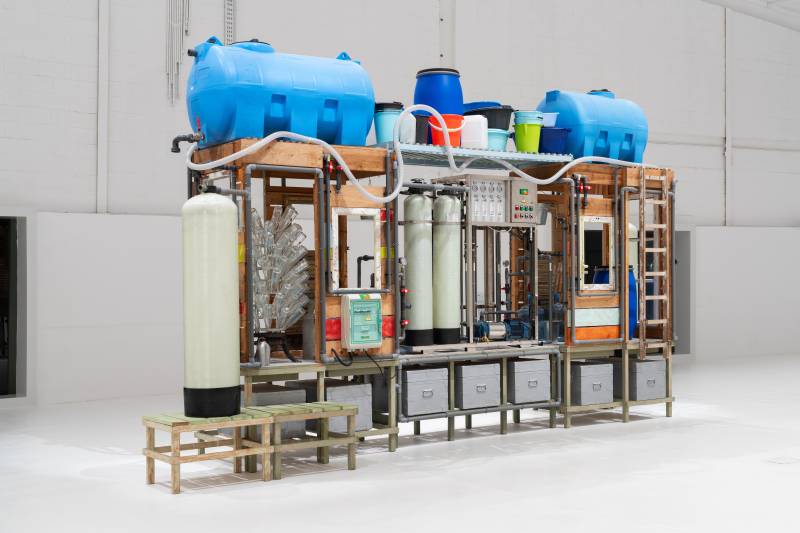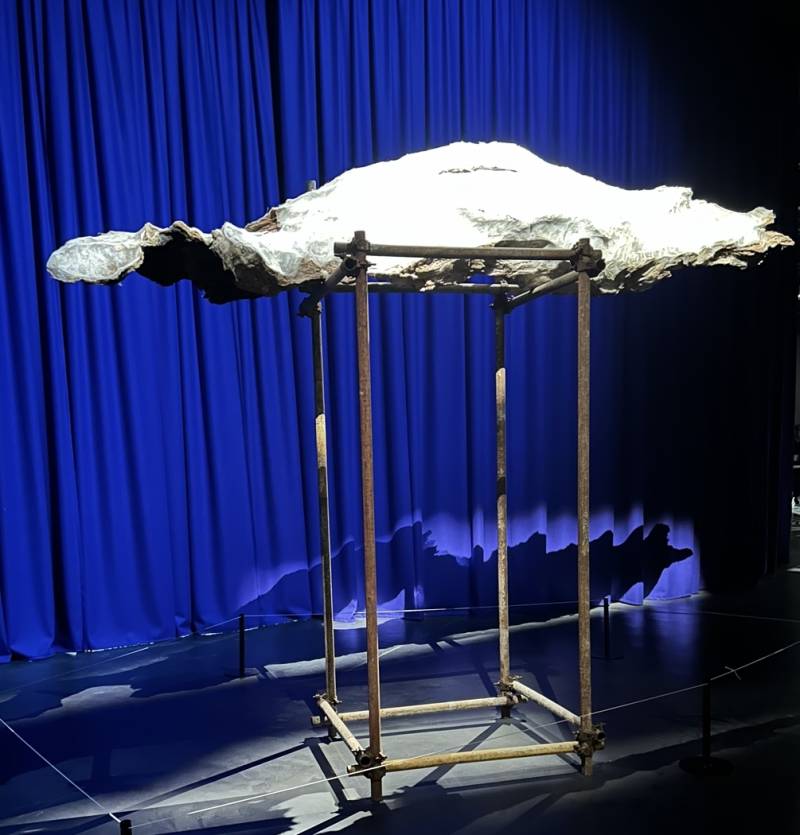
The English writer and the author of A Dictionary of the English Language Dr Samuel Johnson observes that “when two Englishmen meet, their first talk is of the weather.” Oscar Wilde, on the other hand, in his The Importance of Being Earnest, points out that “whenever people talk about the weather, I always feel quite certain that they mean something else.”
However today when two or more individuals discuss the weather, they deal with a greater crisis and a looming issue: the changing climate – not of one city, region, country, or continent, but of the entire planet. In the recent past, there have been torrential rains in the UAE and Saudi Arabia, regions known for their deserts, high temperatures and dry seasons. Climate change is taking place so rapidly that one anticipates that by 2050, Cambridge, a town far from the English Channel, will have its beach.
Due to upheavals in climate, the weather forecast is not a boring update, but a necessary piece of information/estimation to schedule marriages, public events, academic conferences, art exhibitions, political rallies, sports matches, even plans for petty crimes. The shift in nature, outside and around us, substantially affects us. One suspects that like several other species, humans may also disappear or go through a slow, but irreversible modification, if the issue of the environment is not addressed on every level. From our breakfast tables to our bazaars, from our work places to our public parks, from our eating joints to our roads – and to our minds.
Artists, generally regarded as the socially conscious contingent of a population, are the most vulnerable when it comes to the choice between burning a rubber tire for the requirement of artmaking, and being reluctant to do so due to its harmful impact on human beings and atmosphere. Most art material is forged by disrupting and destroying nature. Cutting down trees to produce paper, to assemble a stretched canvas, or paintings’ frames, artist’s easels and tools; grinding stones and extracting minerals for preparing pigments; displacing huge boulders and large stones to carve sculptures; then there is resin, plastic, fibreglass, kerosine oil, thinner, aerosols and other chemicals – all threatening the balance of nature, yet unavoidable in the fabricating of an artwork.

This scenario, like the term Art, is a late phenomenon. Our archaic ancestors recognised that what surrounds us is a sensitive entity, has a role in the larger scheme of things, and possesses a soul. They believed that like the birds, animals, insects, and sea creatures; the clouds, sky, wind, sun, moon, stars, lightning, thunder, storms, mountains, vegetation, water, stones, forest, minerals, and earth are also living beings, with their anima. So one must not hurt them, should respect them, be friends with them, even worship them. Hence the celestial bodies, fire, a few birds and animals, reptiles, fishes, and several plants were considered divine in the prehistoric era. Some of them are still revered, either for religious reasons, or for their secular, national and even revolutionary significance.

The cow, elephant, monkey, rat, and numerous other animal gods appear in Hindu mythology, and Buddhist iconography. In early Christian art, the four apostles were repeatedly depicted as eagle, ox, lion and angel. Some stones have a holy association for different religions, like the Hajr-al-Aswad, the Buddhist statues, and the rough, unhewn but painted blocks found on the roadsides of South Asia, and worshiped by multitudes. Fire is divine in the Zoroastrian faith; water is sacred if collected from Zamzam Well; or from Ganges River; or received after Christian sermons.
Saudi artist Reem Al Nasser gathered burnt branches and twigs of Juniper trees after the fire of 2021, which destroyed trees in Al Jarrah Park; she arranged them in large shelves painted in blue. The state of charred timber and its display suggest a shot from a morgue
In the recently concluded and brilliantly curated Diriyah Contemporary Art Biennale 2024 (Riyadh), one found that more than 100 works by artists/collectives across the world addressed various aspects of our changing world. The Biennale, in the words of Ute Meta Bauer, the Artistic Director of its second edition, “speaks to a sense of revitalisation and renewal, calling to mind the refreshing scent of the air when rain has fallen.” Its title, After Rain, could be a metaphor for a reforming society like Saudi Arabia. It may be understood in reference to how a historic site, Diriyah, was used for housing this contemporary exhibition. The blend of ancient and new was obvious not only in locations, but in buildings, structure and design of the Biennale as well.

Riyadh, like other capitals of the Global South, which have a prolonged past and an expanding future, is making its way into the realm of contemporary art. The Biennale, in terms of its scale, clarity, and relevance to our times, was an impressive and ambitious endeavour. The entire show was installed in six exhibition halls, each with a separate subtitle/theme. If seen in retrospect, the works included here negotiated with the political presence, its impact on social and physical conditions, oppression, displacement, urbanisation, resistance, and largely how a disturbed balance of ecology is transforming spaces, psyches, and cultural practices. The main features of industrialisation are the accumulation of resources, colonial subjugation, control on culture, exploitation through trade, besides leaving a huge trash, tangible and in the form of carbon footprint. Rivers are choked by invading cities, forests are chopped down for extending factory areas, air is polluted due to an increase in carbon dioxide emission. A number of participants of the Biennale recognised and reflected upon the crisis of now, through multiple strategies, positions and point of views.
A few of them recorded the traditional habitats, and its deconstruction due to an altered atmosphere, not necessarily in their immediate geography. Like the Slovak artist Marjetica Potrč’s installation, in which she “recreated the architectural case study of the palafita (stilt house), which is found across South America.” A house that can withstand floods and water clogging; next to this was Lucy+Jorge Orta’s installation, in the guise of a water purification laboratory, “made of scrap metals and recycled materials”; that suggested “the issue of global water scarcity and the possibilities of low-cost, accessible, portable water devices” to complete the picture of our future.
A future, already here with the fast growing residential societies, reduction of agricultural fields, altering of the natural course of sustainability, extinction of some species, sea habitat, and plantations. Although most artists addressed these issues in their individual vocabularies, one work to which many growing and developing economies can relate to was Camille Zakharia’s The Mountain My Neighbour. The Lebanese-born and Bahrain-based artist documented the rapid historicity of flattening, and eradicating nature (mounds, mountains) to construct roads, houses, and modern buildings. His objective- looking photographs reveal a cruel – and ironic reality. Remains of rocky terrains and residences fabricated in concrete exist side by side. Indicating a paradox, which, if expanded, is the story of a society surviving between nature and nurture.

A similar scenario was mapped by the Saudi artist Reem Al Nasser, who gathered burnt branches and twigs of Juniper trees after the fire of 2021, which destroyed trees in Al Jarrah Park; she arranged them in large shelves painted in blue. The state of charred timber and its display suggest a shot from a morgue. A future, in which natural substances would soon disappear due to numerous calamities.
In present conditions, the general population (particularly the farmers) pray for the rain, looking desperately at cloudless skies. Clouds along with providing water to barren lands, also become a symbol of moving beyond the borders of nationhood, language, faith, ethnicity etc. The Chinese artist Liang Shaoji constructed a cloud by himself. “For Lonely Cloud, Liang used camphor wood, usually carved into Buddha statues, as a ground for his silkworms.”
“Wrapped in translucent silk, the heavy piece of wood is reminiscent of a cloud.” The work can be deciphered as a metaphor of rebirth, and “a celebration of life’s vigour,” along with being a comment on world trade, market demands, and the production cycles, all that consumes natural resources; which eventually disturbs ecology, and destroys the environment. Hence the unprecedented floods, storms, rainfalls, forest fires, hurricanes, heat weaves – warnings from nature in the syntax of another language; because “weather” in the words of Richard Hamblyn (The Invention of Clouds), “writes, erases and rewrites itself upon the sky with the endless fluidity of language; and it is with language that we have sought throughout history to apprehend it.”

